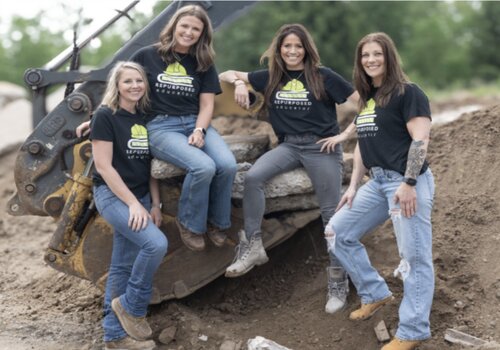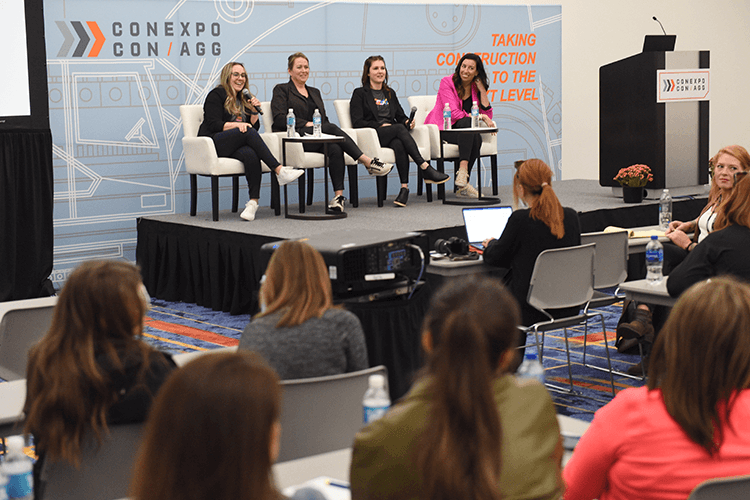The construction industry has always been about more than just bricks and beams—it’s about the people who bring projects to life. A well-rounded, diverse team can tackle challenges with a broader perspective, offering innovative solutions while better representing the communities they serve. However, traditional hiring practices can be barriers for underrepresented groups. This limits the number of prospective workers along with the richness of the pool.
So, how can contractors and construction managers actively build more inclusive teams? It starts with intentional recruiting strategies and workplace practices that foster an environment where everyone feels welcome. Let’s dig into the ways you can diversify your workforce and make your team stronger.
1. RETHINK YOUR JOB LISTINGS
Let’s face it—most job postings follow the same template, stuffed with technical jargon and stiff qualifications that may unintentionally discourage great candidates. If your hiring process only attracts the same type of applicant, it’s time for a refresh.
A good job listing should be clear, accessible and welcoming. Think about the language you use—does it sound inviting? Does it encourage applicants from various backgrounds?
- Use plain language: Overly complicated descriptions can be intimidating. Keep it straightforward and approachable.
- Highlight your commitment to diversity: Make it clear that your company values an inclusive workforce.
- Focus on essential skills, not rigid requirements: If possible, replace strict experience requirements with broader competency-based qualifications.
Additionally, consider offering applications in multiple languages or using inclusive terminology that signals your openness to hiring diverse candidates.
2. EXPAND YOUR RECRUITING CHANNELS
Where you post your job openings has a huge impact on the type of candidates you attract. If you only advertise through traditional industry networks, you may miss out on talented professionals from non-traditional backgrounds. To break that cycle, branch out into different recruiting avenues:
- Partner with local organizations that support underrepresented workers: Nonprofits, diversity-focused workforce development groups and minority trade associations can help connect you with eager, qualified candidates.
- Attend diverse hiring events: Many communities host job fairs tailored to women, veterans and minority workers. Getting involved in these programs can expose your company to a wider talent pool.
- Connect with trade schools and apprenticeship programs: There are plenty of trade schools focusing on training women, minorities and veterans for construction careers. Partnering with these groups creates a steady pipeline of skilled workers.
Diversifying your hiring sources naturally leads to a workforce that reflects the reality of your community, making your team stronger and more adaptable.
3. CREATE APPRENTICESHIP AND TRAINING PROGRAMS
Not everyone enters construction through the same path, and that’s a strength, not a weakness. While traditional vocational training is important, many skilled workers develop their expertise through on-the-job experience. By offering apprenticeship and mentorship programs, you can cultivate new talent while making your workforce more inclusive.
Consider designing programs specifically aimed at underrepresented groups. Some strategies include:
- Providing entry-level training: Many capable workers lack formal education but have the potential to thrive in the industry. Offering structured training brings everyone up to speed.
- Implementing mentorship programs: Pairing new hires with experienced construction professionals can accelerate their learning while integrating them into your team.
- Developing diversity-focused training tracks: Specialized programs aimed at women, minority workers and veterans can make your company a leader in inclusive hiring practices.
Opening up pathways for non-traditional applicants isn’t just good for the workers—it strengthens the industry as a whole.
4. BUILD AN INCLUSIVE WORKPLACE CULTURE
Hiring diverse workers is only half the battle. If your workplace culture doesn’t support inclusivity, retention will become an issue. Every worker needs to feel valued, respected and empowered in their role.
An inclusive workplace starts with leadership setting the right tone. Here’s how you can foster a welcoming environment:
- Implement diversity training: Ensuring all employees—especially managers—understand the importance of inclusivity can help create a respectful work environment.
- Encourage open conversations about inclusion: Providing safe spaces for workers to voice concerns or share experiences makes inclusivity a shared priority.
- Promote fairness in career growth: Everyone should have access to the same opportunities for advancement, regardless of background. Transparent promotion paths eliminate bias and favoritism.
A team that feels heard and respected will always be more motivated and productive, making inclusion a smart business investment.
5. LEAD BY EXAMPLE
A company’s commitment to diversity isn’t just about hiring—it’s about leadership putting actions behind their words. An inclusive culture starts at the top. If managers and contractors model fairness and diversity, employees will follow suit.
Here’s how leadership can actively champion inclusivity:
- Hire diverse leadership teams: Representation matters. Having leaders from different backgrounds signals to employees that diversity isn’t just lip service—it’s a priority.
- Ensure fair pay and career advancement opportunities: Wage disparities and promotional bias can discourage diverse hiring. Conduct regular compensation reviews to eliminate gaps.
- Review hiring and promotion practices regularly: Bias can creep into processes over time, so routinely evaluating policies ensures fairness.
When leadership is dedicated to inclusion, the effects ripple throughout the company, creating a more welcoming, productive and innovative team.
A diverse construction team is more than just a checkbox—it’s an asset. Different perspectives lead to creative problem-solving, stronger community connections and better overall work. By prioritizing inclusive hiring strategies and fostering a respectful workplace culture, contractors and managers can build teams that reflect the world around them.
Let's not just construct buildings and roads—let's build opportunities for everyone. The future of construction is diverse, and the most forward-thinking professionals are those who embrace that change. Dive into our articles for more insights and updates. Share this article with your team and spark a conversation about building a diverse and inclusive workforce. Together, we can create a stronger, more innovative industry.
Photo credit: BIGSTOCKPHOTO.COM/SIRISAK












